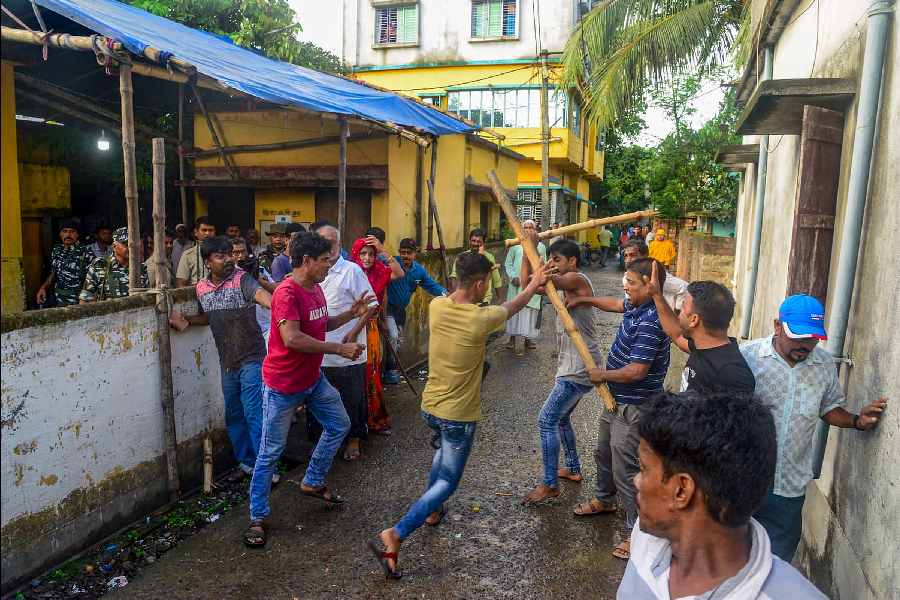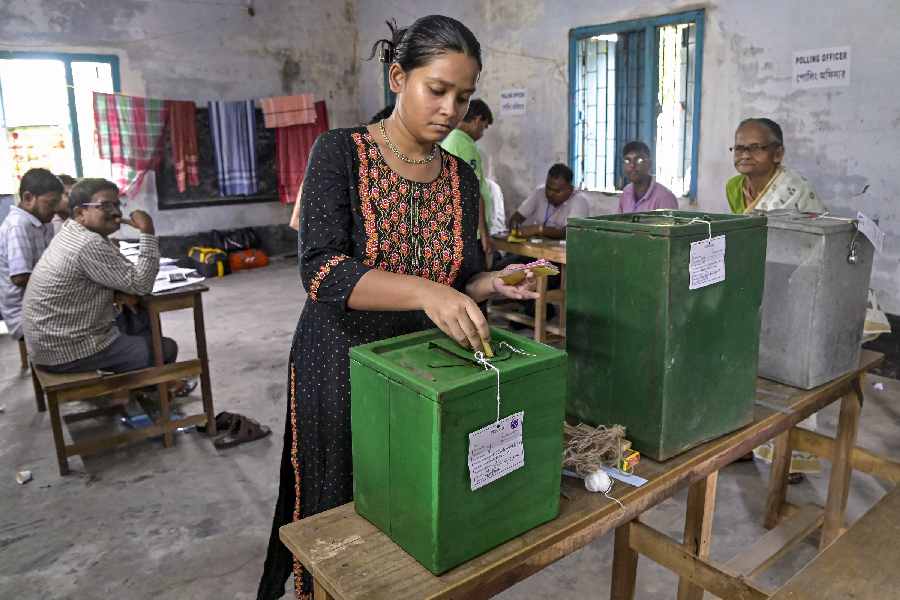Bengal has witnessed yet another bloody exercise of franchise in its rural polls. No surprises there really, given the state’s dubious distinction of embarking on break-less political violence in the past. But what seems to have broken a tradition this time is the fact that the ruling dispensation seems to mainly have been at the receiving end of that violence.
As many as nine of the 15 people murdered in the state on the day of the polls were Trinamul Congress workers. Add to it the number of Trinamul supporters who lost their lives in the state over the past month ever since the polls were announced on June 8, and that figure could easily double.
That, coupled with the relatively low voter turnout of 66.28 per cent (5-7 percent less compared to the usual voter turnout in Bengal’s countryside in all formats of elections) till 5 pm, could carry ominous signals for the Trinamul top brass, poll observers feel.
“It’s a clear sign that the TMC is now facing tough resistance in its grass roots in some of the key districts of Bengal. That may not be a good sign for the party in the run-up to the Lok Sabha polls next year,” a party insider said.

West Bengal Congress supporters take part in a protest demanding violence free panchayat polls, in Calcutta. PTI picture
Resistance, but from whom?
It may not just be the “resistance” that matters, but where it’s coming from and from who could also be equally important. Allegations have been leveled against the Congress and Left workers for having launched assaults against the Trinamul in Murshidabad, Malda, Cooch Behar and Uttar Dinajpur, districts where the ruling party is admittedly on a bit of a sticky wicket. The Trinamul think tank could well view this trend as the consolidation of the Congress-Left combine in some of their traditional strongholds which had shifted allegiance to Mamata Banerjee a decade and a half ago but, since the Sagardighi bypolls, are slowly inching their way back towards their traditional following.
Of course one needs to wait for the rural poll results to analyze the possible trend in greater detail. But if the visuals of voters snatching away ballot boxes and dumping them in water bodies alleging poll malpractice by the ruling party and as a mark of outrage at not being able to cast their own vote is anything to go by, the Opposition would certainly take heart from this kind of “people’s resistance” which their leaders have been talking for a while now.
Ready conspiracy theory
Officially, though, the Trinamul has spun a conspiracy theory on this disturbing trend for the party. In the run up to the panchayat elections, a script was prepared to show Bengal in a negative light. This was the plan of the Opposition parties, which Trinamul Congress had condemned even before the poll process began, party leaders said while addressing a post poll joint Press conference in Calcutta on Saturday.
“The Opposition parties are marketing violence. We don’t want a single death to take place, but the majority of those who’ve lost their lives are Trinamul workers If, indeed, Trinamul was instigating the violence, why would they target their own workers?” said a leader in defence of the day’s unsavory developments.

Workers of rival political groups in a clash during panchayat elections, at Barasat in North 24 Parganas district of West Bengal. PTI picture
Relatively low turnout
Some observers have also pointed at the relatively low turnout as a possible indicator for Trinamul’s “loosened stranglehold” over rural Bengal. “While it’s possible that people may have been intimidated by the violence around them and chose not to go to the polling stations, it’s also possible that faced by Opposition resistance there may have been less false voting this time compared to, say what happened in the previous edition of the rural polls in 2018, that could have adversely affected the official turnout number,” a poll watcher remarked.
Given that Mamata Banerjee would waste little time in gearing up for the crucial Lok Sabha polls next year (as would the Opposition in the state) once the panchayat dust settles down, she is likely to take into account seriously these sure indicators of a change in the state’s political climate before finalising her electoral strategy for the big push.

A woman drops a ballot paper while casting her vote for the panchayat elections, in Nadia. PTI picture











